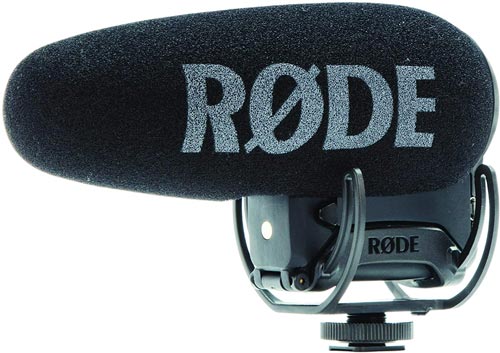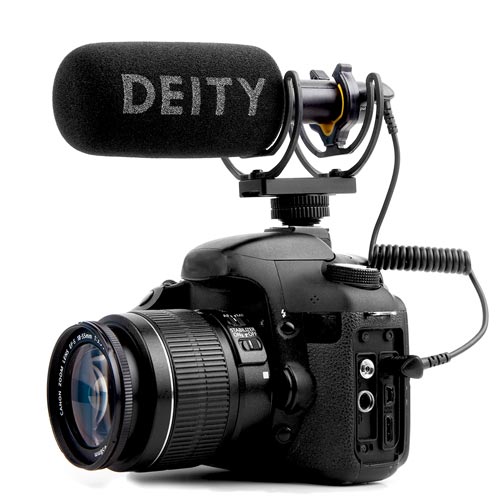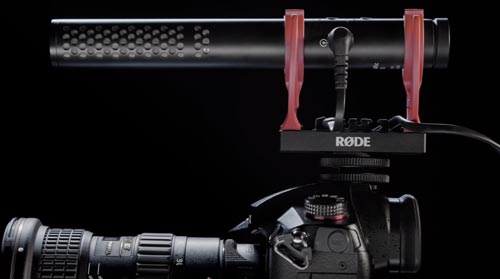4 Best On-Camera Shotgun Microphones
If you’re filming people who are speaking in front of the camera, you’re going to need a “shotgun” microphone.
Good audio is essential for professional quality video. How you record live audio is important, especially if that involves the people speaking. There’s nothing more off-putting for an audience than inaudible or unpleasant sounding voice.
A camera’s inbuilt microphone is not designed to get great spoken voice audio. Unless you are very close to the mic and in a quiet location. That’s why many vloggers and video makers now mount a dedicated shotgun mic to their camera (or camera cage).
Another benefit of using an external mic is that it doesn’t have to be attached to the camera. You also have the option to mount the camera in a better position. You’re only limited by the length of the cable.
An on-camera shotgun microphone can plug in to the camera’s 3.5mm mic socket. Then either positioned on the camera’s hot-shoe or mounted on a boom or mic stand.
Shotgun Microphones
Shotgun microphones are directional. This means they attempt to cut out any sound source apart from what the microphone is directed at. How effective they are at this depends on the quality of the mic.
The length of the mic often makes a difference too. That’s why mini shotgun microphones are often less good at isolating your voice than those of full length. However, mini shotguns are often more affordable and more convenient.
Distance from the mic
There’s one thing many vloggers and self-shooters are unaware of when they look for a shotgun mic: distance is key to a good sound quality. Each microphone has different qualities, but if you move too far from the mic you will lose audio quality. This is true for ANY microphone.
Shotguns microphones are just a bit better at isolating the sound from a distance. But at around 3 meters and beyond, more background noise will become apparent. Ideally, you should remain at about 1 meter from the mic.
Environment
Where you record the audio has as big an affect on the audio as what you record it with. If you are in a room with many bare, hard surfaces, the reflections (echoes) from the surfaces will devalue the audio. On the other hand, if you are in a room with sound absorbing panels (or curtains, sofas and so on) the audio quality will improve, no matter what mic you use.
1. RØDE VideoMic Pro+
The RØDE VideoMic Pro+ is the upgraded version of the popular RØDE VideoMic Pro. Both are small shotgun mics that can be mounted to the top of your camera. They are both lightweight and convenient, whilst employing a shock-mount to remove noises from bumps and sudden movements.
The VideoMic Pro+ is now RØDE’s flagship mirrorless or DSLR mountable microphone. Rechargeable LB-1 lithium-ion are included (or use two AA batteries) which last for over 100 hours. Note, one improvement from the VideoMic Pro is the auto on and off switch which avoids you forgetting to switch on both camera and mic.
The VideoMic Pro+ has a frequency range of 20Hz-20kHz, giving you a strong bass response. Bear in mind that warmer sounding voices have a mid-bass frequency presence, while missing bass can leave the voice sounding “tinny”. Another advantage of the Pro+ is being able to record at 2 levels simultaneously. This gives you a “safety” track of audio, in case of occasional peaking.
Find RØDE VideoMic Pro+ on Amazon2. Deity V-Mic D3 Pro
The Deity V-Mic D3 Pro is around the same budget as the RØDE VideoMic Pro+ ($200+). But there’s also the Deity V-Mic D3 (not pro) which comes at around half the price. So what’s the difference?
One is that the Deity V-Mic D3 lasts up to a whopping 208 hours on a single AAA battery. Which is kinda crazy if you compare that to the RØDE VideoMic Pro+ above. Meanwhile, the USB rechargeable V-Mic D3 Pro offers 50+ hours of run time.
The D3 Pro will work with a phone, tablet, DSLR, mirrorless camera and body pack transmitters. The V-Mic D3 Pro also comes with a +20dB step-less volume control. While other mics use a switch in 10db increments, the D3 Pro is a simple volume knob, almost like having an inbuilt mixer.
Find Deity V-Mic D3 Pro on Amazon3. Azden SMX-15 & SMX-30
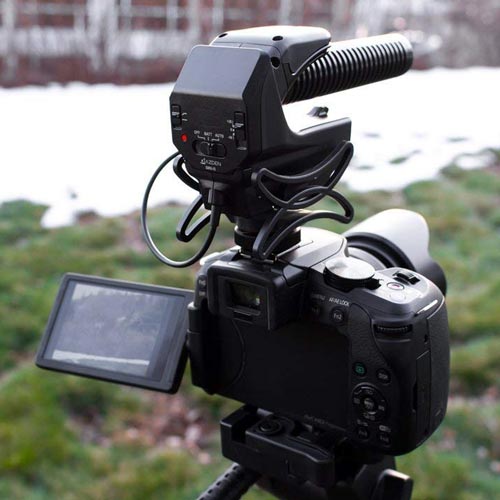
These on-camera shotgun mics all seem to come in twos and the Azden twins are no different. There’s the Azden SMX-15 and the more expensive Azden SMX-30. The main advantage of the SMX-30 is that it’s a shotgun plus a stereo microphone, which makes it more versatile than the SMX-15.
They both come with cold-shoe shock-mount to help reduce shake and movement noises. Both mics have a switchable level adjustment from -10dB to 0dB and +20dB. They also both have a frequency response of 40 Hz to 20 kHz and a low cut filter (removing frequencies below 120 Hz). Both version also have an auto mode, which powers the mic up and down when you switch the camera on and off.
Both models operate using 2 x AA batteries which should last up to 24 hours in constant use.
Find Azden SMX-30 on Amazon4. RØDE VideoMic NTG
RØDE’s NTG mics are well known amongst low budget indie filmmakers looking for good quality audio without spending $1000 for a Sennheiser 416 or other pro-level shotgun mics. Meanwhile, YouTubers and vloggers shooting with DSLRs are used to the VideoMic range of mini shotguns. The RØDE VideoMic NTG is a kinda combo of both, sitting somewhere between them.
The RØDE VideoMic NTG features the same acoustic design as the NTG5 broadcast shotgun microphone. The mic features an auto-sensing 3.5mm output, which works with both cameras and smartphones. There’s also a USB output for connecting directly to a computer, making this mic ready for the modern age. Smartphones, DSLRs, laptops… it’s versatile.
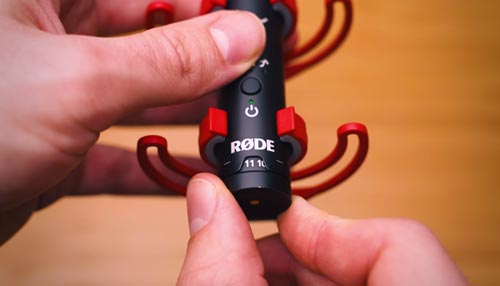
In addition, RØDE VideoMic NTG comes with both analog and digital outputs. This comes via a ADC (analog to digital converter). With this mic you get a variable gain control (exactly the same as the Deity D3 Pro) so you can fine tune from mic level to line level. Plus, there’s a built-in preamp with a dB peak warning light.
This is all powered by a 350mAh lithium-ion battery, which lasts for 30+ hours on a fresh charge. The frequency range is the same as the VideoMic Pro+ (20Hz – 20kHz). There’s 2 high pass filters, safety channel, plus a high frequency boost. The mic even has a headphone output which is useful for monitoring yourself with the mic connected to a computer for voice over work.
Find RØDE VideoMic NTG on AmazonEager to learn more?
Join our weekly newsletter featuring inspiring stories, no-budget filmmaking tips and comprehensive equipment reviews to help you turn your film projects into reality!
Simon Horrocks
Simon Horrocks is a screenwriter & filmmaker. His debut feature THIRD CONTACT was shot on a consumer camcorder and premiered at the BFI IMAX in 2013. His shot-on-smartphones sci-fi series SILENT EYE featured on Amazon Prime. He now runs a popular Patreon page which offers online courses for beginners, customised tips and more: www.patreon.com/SilentEye


